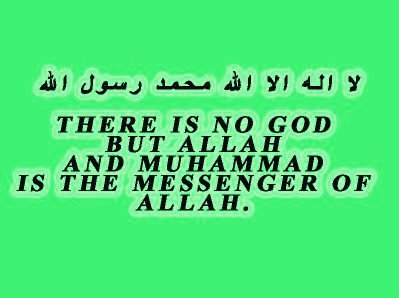Lebanon – the untold story

“The US government did seems to know a good deal more about the weapons being used by the Maronites than anyone has told us in Beirut. It was, unfortunately, not United States dosed its eyes to transfer of American arms by Israel to countries or clients whose aims are not in harmony with ours,” – McMurtrie Godley, US Ambassador in Beirut after meeting called by Henry Kissinger in Amman with Chiefs of US Mission in the Middle East.
“So long as, for domestic political reasons, we arm and encourage Israel in its unwillingness to accept the two-state, land for peace solution, now being offered by Yasser Arafat and virtually the entire Arab world, we will be perceived as Israel’s mentor by Israel’s victims,” – Richard H. Curtis, US Embassy Spokesman in Beirut, June, 1989.
“Lebanon has been battered by 14 years of civil war, an Israeli invasion and a seemingly endless cycle of factional feuding in which atleast 150,000 people have been killed and one million people – one quarter of the population – displaced,” – Associated Press, May, 1989.
The present-day Lebanon, carved out of Ottomon’s province of Al-Sham (Syria) by the French occupation forces after WW I – as a Christian enclave. In their Muslim hatred, the French also attached a large Muslim area to be ruled by the newly appointed Christian rulers. This new entity became home to the followers of several diversified religions – such as majority Maronite, Orthodox and Melchite Christians; Shia and Sunni Muslims; Druze; Kurds; Jews; Armenians and Assyarians. Under Ottomon rule several Maronite-Druze massacres and communal riots happened in the Shuf and Mount Lebanon areas during 1841, 1845 and 1860.
The French colonialists gave the new entity a system of government (Constitution) based on religious affiliations – a Maronite as President; a Sunni Muslim as Prime Minister; a Shia Muslim as Speaker of National assembly, and a Christian as Commander-in-Chief of Armed Forces. However, when Paris awarded Lebanon independence in 1943 – the Christians did enjoy their majority due to higher birth-rate among Muslims. The 1958 Christian-Muslim clashes were a warning that Muslims are no longer happy with a system which gave a five-to-six edge in parliament and government to Christians, most of whom preferred western green pastures and had emigrated to foreign lands.
The first wave of Palestinian refugees who were not allowed to return to their homes after 1948 fighting. While Muslim Palestinians were not awarded Lebanese citizenship, the wealthy Christians from Haifa faced no problem in being accepted. The later influx of Palestinian refugees created a demographic problem for the Maronite elites – but it provided political muscles to Muslim elites. Israelis saw this a great opportunity to distroy any possiblity of a Muslim-majority pro-Palestinian government along its occupied territory.
In April 1973, Israeli terrorists, disguised as foreign tourists rented cars for hit squads, which then drove by night to the apartments of three PLO officials and assassinated them along with neighbours who opened their door to see what was happening. The Israeli murderers escaped Beirut via Sea. This incident forced Palestinians to carry their arms openly similar to the Christian and Muslim militias.
While the Israelis were arming their Christian friends via mysterious arm caches that turned along Lebanon’s coasts – Israeli jets dropped bombs on Palestinian refugee camps, teaming with children, whose crushed and torn bodies were pictured over and over in the newspapers – Lebanon happens to be home to 25,000 Americans. The first foreign victims of Lebanon’s Civil War (1975) – were a Canadian teacher and his British friend. The Brit was stabed to death, while the Canadian was gang-raped by members of Christian militia – but was released to tell his story. Close to 60,000 people were killed during the first 18-month of fighting, mostly in the city of Beirut.
The massacre of Palestinians at the Tel Zaatar camp in East Beirut on August 12, 1976 – was a joint Christian militia and Syrian forces operation, which resulted in the cold-blood murder of 5,000 Palestinian refugees. As the last Palestinian fighter laid-down his arms – the Maronite militiamen attached rope to them and then dragged them, first alive behind their cars until they reached the bridge over the Dog river where the bodies were dumped.
When USrael realized that its Christian stooges are losing in the civil war – it called the Arab League to broker a cease-fire. The later gave mandate to Syria to go in and restore ‘peace’. Washington promised to secure guarantees that Israeli thugs would not attack Syrian forces. The zionist regime agreed reluctantly, because it clearly wanted to see a stalemate and partition to keep Christian Lebanon as a tiny non-Islamic confessional state in the Middle East - like Israel.
The Zionist regime has always been very allergic to peace among its Arab neighbours. It invaded Lebanon in 1982 and turned Beirut into a hell worse than their barbarism in collaboration with Nazis in the 1940s. More than 20,000 Lebanese and Palestinian were killed. The Sabra and Shatila massacre of Palestinians by Israeli-armed and supported Maronite militia (Phalangist) succeeded Tel Zaatar in Arab history books – while US Marine activities, in 1982-83, in Israeli interests, in which some 260 American died are recorded in US military annals.
Islamic Resistance, Hizb\’Allah rose in 1982 in response to Zionist occupation of Lebanon. First it kept itself to social and charitable works, then took arms against Zionist-Phalangist occupation of Southern Lebanon – and currently has become the leading political party. Hizb’Allah carried 18 year miltary resistance against Zionist terrorists, who were finally forced to vacate most of Southern Lebanon in humiliation in 2000. Six year later, Hizb’Allah inflicted the greatest military humiliation to 30,000-strong Israeli forces in 34-day war – since the plantation of Zionist state by the western powers in 1948.
About these ads

No comments:
Post a Comment